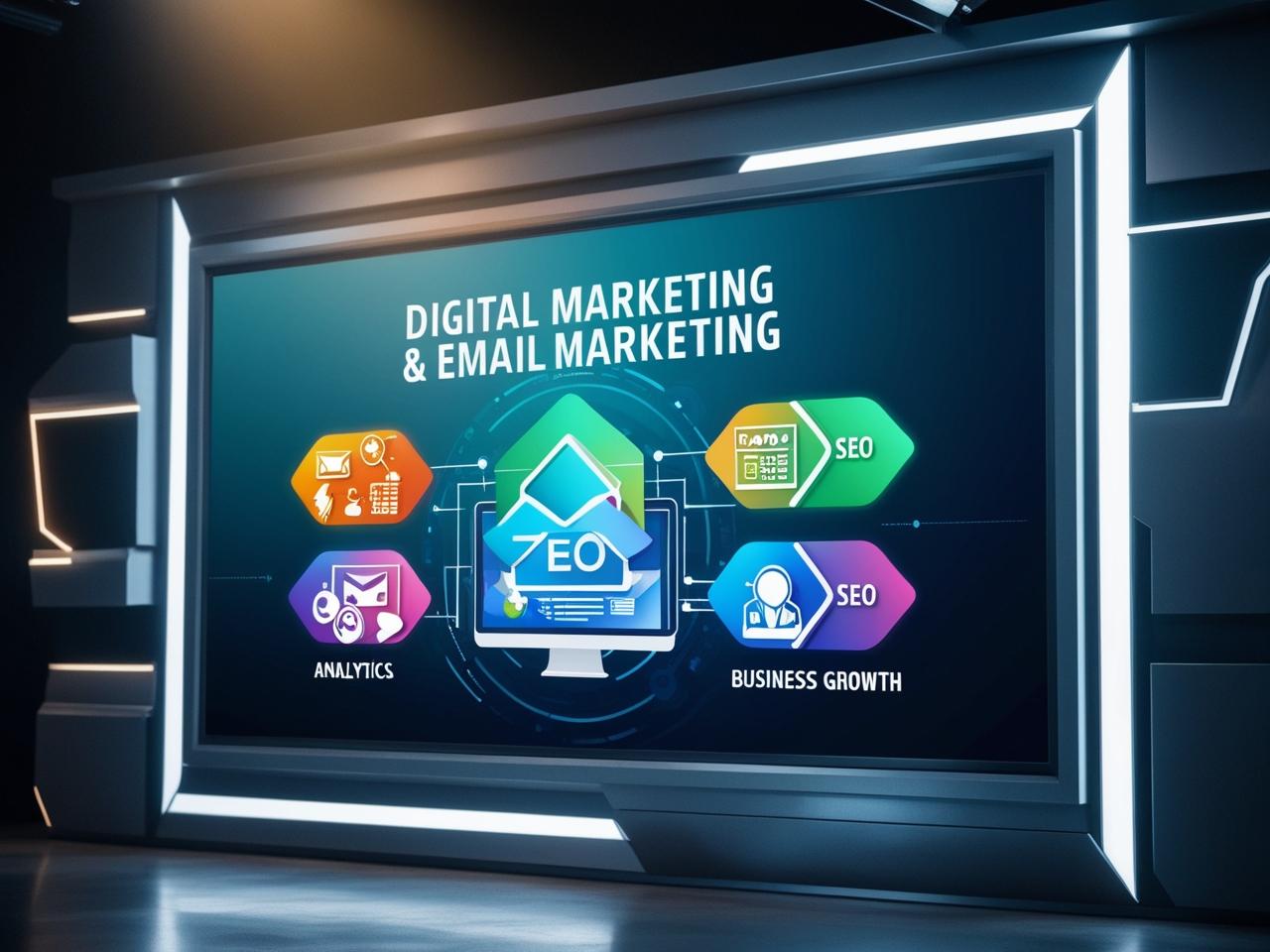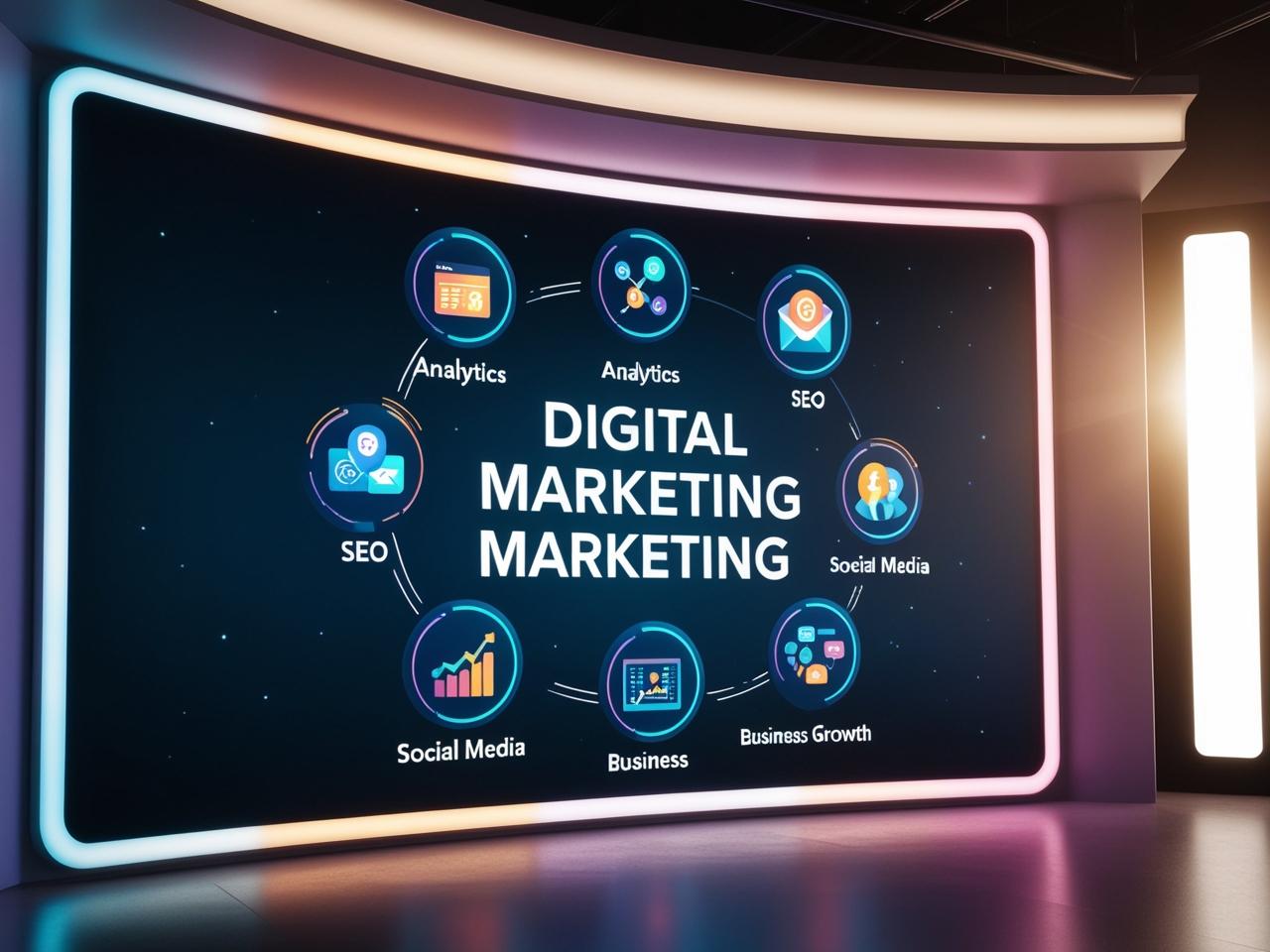In the digital age, businesses in Raleigh can no longer afford to ignore the power of online marketing. Whether you’re a small local business or an established enterprise, digital marketing has become an essential tool for growth, visibility, and customer engagement. From search engine optimization (SEO) to social media marketing, digital marketing strategies allow businesses to reach a broader audience and connect with customers more effectively than traditional marketing methods.
In this blog post, we will discuss the importance of digital marketing for businesses in Raleigh, exploring how leveraging modern marketing techniques can help you achieve success in an increasingly competitive environment.
Why Digital Marketing is Crucial for Businesses in Raleigh
Raleigh, the vibrant capital of North Carolina, is home to a growing number of businesses and industries. As more businesses continue to establish their online presence, digital marketing has become a necessity for standing out in the local market. Here’s why digital marketing in Raleigh is vital for your business:
1. Increased Online Visibility
One of the primary reasons businesses need digital marketing in Raleigh is to increase their online visibility. Whether your business operates in the tech sector, retail, healthcare, or hospitality, having a robust digital marketing strategy ensures that you can be found online by potential customers.
By utilizing SEO techniques, businesses can improve their search engine rankings, which in turn increases the chances of being discovered by people actively searching for the products or services they offer. With a comprehensive digital marketing strategy, your business can appear at the top of search results, ensuring that your products and services are seen by a wider audience.
For Raleigh businesses, local SEO is especially important. Optimizing your website and Google My Business profile for local searches ensures that when potential customers in Raleigh look for services in your area, your business shows up. This increases the likelihood of turning local searches into leads, foot traffic, and sales.
2. Cost-Effective Marketing
Traditional marketing strategies such as TV ads, radio spots, and print media can be expensive, especially for small businesses with limited budgets. Digital marketing in Raleigh provides a cost-effective alternative to these traditional methods. By focusing on online channels, businesses can achieve significant results at a fraction of the cost.
For instance, pay-per-click (PPC) advertising through platforms like Google Ads and Facebook Ads offers a more affordable way to reach targeted audiences. With PPC, you only pay when someone clicks on your ad, making it a highly efficient method of driving traffic to your website.
Additionally, social media marketing, email marketing, and content marketing offer low-cost strategies for building brand awareness and engaging with potential customers. These platforms allow you to create compelling campaigns that resonate with your audience without breaking the bank.
3. Targeted Audience Reach
One of the significant advantages of digital marketing in Raleigh is the ability to target a highly specific audience. Traditional marketing channels often reach a broad audience, including people who may not be interested in your business. Digital marketing, however, allows you to narrow down your audience based on demographics, interests, behaviors, and location.
For example, if you’re a Raleigh-based business looking to attract customers within a specific radius, you can use local SEO, geo-targeting on social media platforms, and paid ads to ensure your marketing efforts are focused on the most relevant audience.
You can also segment your audience based on factors like age, gender, purchasing habits, and online behavior, allowing you to craft personalized marketing messages that are more likely to resonate with your ideal customers.
4. Increased Customer Engagement
In the digital world, customer engagement is key to building strong relationships with your target audience. Digital marketing in Raleigh allows businesses to interact directly with customers in real-time, offering a level of engagement that traditional marketing channels simply cannot match.
Platforms like social media, email marketing, and live chat on your website provide opportunities to engage with your audience, answer questions, provide valuable content, and respond to feedback. This type of direct interaction helps build trust with potential customers and strengthens the bond with existing ones.
Additionally, engaging with your customers on social media platforms like Facebook, Instagram, and Twitter allows you to build brand loyalty and foster a sense of community around your business.
5. Measurable Results and Analytics
One of the most significant advantages of digital marketing in Raleigh is the ability to measure results. Traditional marketing methods often lack detailed metrics, making it difficult to determine the effectiveness of a campaign. In contrast, digital marketing allows businesses to track key performance indicators (KPIs) and measure the success of their campaigns in real-time.
Tools like Google Analytics, Facebook Insights, and email marketing platforms provide valuable data on website traffic, conversion rates, click-through rates, and engagement metrics. This data enables businesses to make data-driven decisions, optimize campaigns, and improve overall marketing strategies.
By analyzing the performance of different marketing channels and tactics, you can identify what’s working and what needs improvement, ensuring that your marketing efforts are always optimized for success.
6. Building Brand Authority and Trust
Digital marketing also plays a crucial role in establishing brand authority and trust, both of which are critical for long-term success. When people search for products or services related to your business, you want them to see your brand as a reliable and credible source. This can be achieved through content marketing, SEO, and social media engagement.
By creating high-quality content that addresses your audience’s needs and pain points, you position your business as an expert in your field. Blogging, video content, and educational resources help to build trust and keep your customers engaged.
Furthermore, positive reviews and testimonials on platforms like Google, Yelp, and social media increase your brand’s credibility and influence purchasing decisions. A strong online reputation is essential for attracting new customers and retaining loyal ones.
7. Adapting to Consumer Behavior
Consumer behavior has changed dramatically over the past decade, with more people relying on the internet to research products, compare prices, and make purchasing decisions. According to recent studies, more than 80% of consumers search online before making a purchase. Digital marketing in Raleigh helps businesses adapt to these shifts in consumer behavior.
Having an online presence allows you to meet your customers where they are—on their smartphones, laptops, and tablets. Whether it’s through a user-friendly website, engaging social media profiles, or targeted advertising, digital marketing ensures that your business is accessible to customers at every stage of their buying journey.
8. Competitive Advantage
In Raleigh’s competitive business landscape, digital marketing can give you the edge over competitors. Many businesses still rely on traditional marketing methods, which may not be as effective in reaching the digital-savvy customer base. By embracing digital marketing, your business can stand out from the crowd and gain an advantage over competitors who are slow to adopt modern marketing strategies.
By continuously optimizing your digital marketing campaigns and staying updated on the latest trends and tools, you can stay ahead of the competition and drive more business.
Key Digital Marketing Strategies for Raleigh Businesses
Now that we’ve discussed the importance of digital marketing for Raleigh businesses, let’s explore some of the most effective digital marketing strategies that can help your business grow:
1. Search Engine Optimization (SEO)
SEO is one of the most powerful tools in digital marketing. By optimizing your website for search engines, you increase your chances of ranking higher in search results for keywords relevant to your business. A solid SEO strategy includes keyword research, on-page optimization, link building, and local SEO to ensure that your website appears in local search results in Raleigh.
2. Social Media Marketing
With a large number of people in Raleigh actively engaging on social media platforms, social media marketing is an excellent way to reach your audience. Platforms like Facebook, Instagram, and LinkedIn allow you to build brand awareness, engage with customers, and promote your products and services.
3. Pay-Per-Click Advertising (PPC)
PPC campaigns, such as Google Ads or Facebook Ads, provide an efficient way to drive targeted traffic to your website. With PPC, you only pay when someone clicks on your ad, ensuring that you are spending your marketing budget effectively.
4. Email Marketing
Email marketing remains one of the most effective ways to stay in touch with customers, nurture leads, and drive conversions. By creating personalized email campaigns and offering value through promotions, newsletters, and exclusive content, you can increase customer loyalty and retention.
5. Content Marketing
Creating valuable and informative content that addresses the needs of your target audience is an essential part of digital marketing. Blogging, video content, infographics, and guides help establish your brand as an authority in your industry while also providing value to your customers.Visit Our Online Platform for More
Conclusion
In today’s fast-paced, digitally-driven world, digital marketing in Raleigh is no longer optional; it’s essential for businesses looking to grow, engage customers, and stay competitive. By leveraging the right digital marketing strategies, businesses can enhance their online visibility, connect with local customers, and increase revenue.
Whether you’re looking to improve your website’s SEO, build brand awareness on social media, or drive targeted traffic through PPC campaigns, digital marketing offers a multitude of opportunities for business success. If you’re ready to take your business to the next level, it’s time to embrace the power of digital marketing in Raleigh and start building a successful online presence today.








